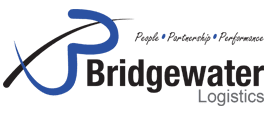The importance of a sound logistics strategy can never be overemphasised, considering the large role that it contributes towards business success.
“Logistics ranks second only to product quality in order of importance and neglect thereof, or poor planning of this critical aspect of business will, therefore, have large and long-term negative impacts. Unfortunately, there are still many companies that believe that a sound logistics strategy merely entails appointing any third-party logistics (3PL) provider,” Quinton de Villiers, managing director of Bridgewater Logistics, says.
De Villiers, whose team also undertakes extensive transport logistics project management for the company’s many clients, suggests firstly aligning business objectives with the overall goals of the logistics strategy.
This is considering that logistics plays a direct role in increasing efficiencies by reducing overhead, inventory and costs, in addition to improving customer satisfaction by minimising delivery times and by ensuring a reliable means of distributing product to market.
The next step entails scrutinising existing logistics operations to determine strengths and weaknesses.
Strategic analysis takes into consideration those opportunities that can be exploited to improve the management of logistics, not least of which is the appointment of the most suitable 3PL provider, and then comparing costs, risks and potential benefits of pursuing such a plan.
Structural analysis, on the other hand, entails placing the current organisation of logistics operations and the supply-chain under the microscope.
“A sound starting point for this study is determining whether there is scope to outsource logistics, as well as to increase the use of distribution networks and centres, among others,” he says.
“Importantly, it also requires an in-depth understanding of existing logistics resources, and includes knowing the exact number of warehouses, distribution centres, trucks and outsourcing partners, in addition to human capital, that is involved. There are other critical details that should also never be overlooked. These include ensuring that the best possible rates have been secured on all freight shipments and all probable ways of improving truck utilisation have been fully explored.”
De Villiers advises to then conclude the process by undertaking robust functional analysis, which also encompasses scrutinising other important roles within a company, including supply-chain management, procurement, distribution, transportation and reverse logistics.
Importantly, the assessment of supply chain management should also encompass both inbound and outbound logistics, in addition to distribution networks.
Work can then start on tracking the purchasing of items that are required by the business, as well as those functions involved in the distribution to support outbound logistics.
Importantly, he reminds that the study also requires a thorough understanding how goods are actually moved when they leave the warehouse and how the business handles returns when a customer is dissatisfied with the product.
“It is only once these steps have been taken that work can seriously start on developing a robust logistics strategy and ways in which to implement it across the organisation for maximum impact. This includes retaining a competitive edge in an increasingly challenging economic environment,” De Villiers concludes.


